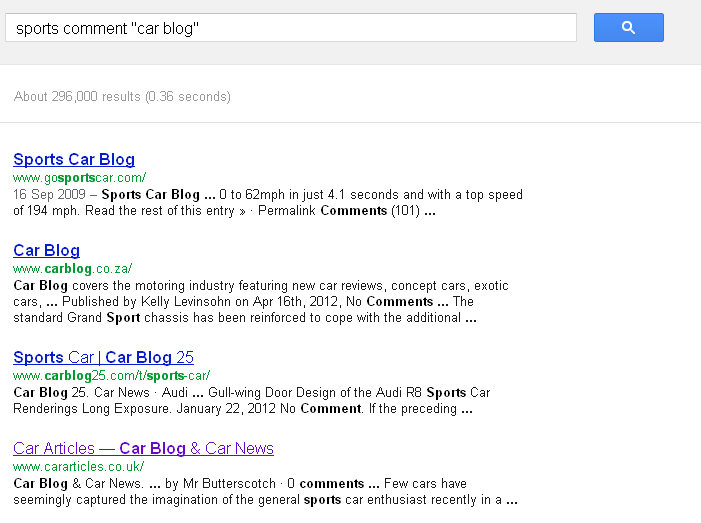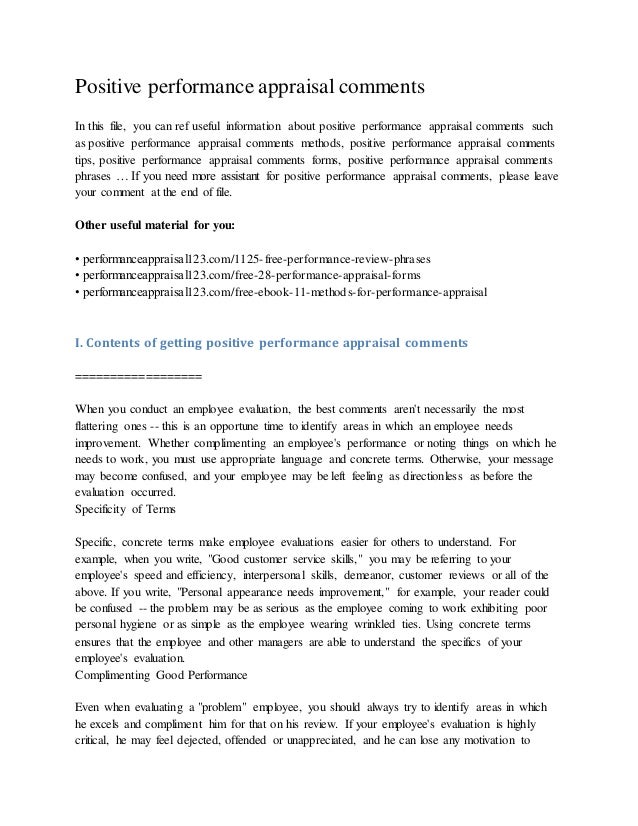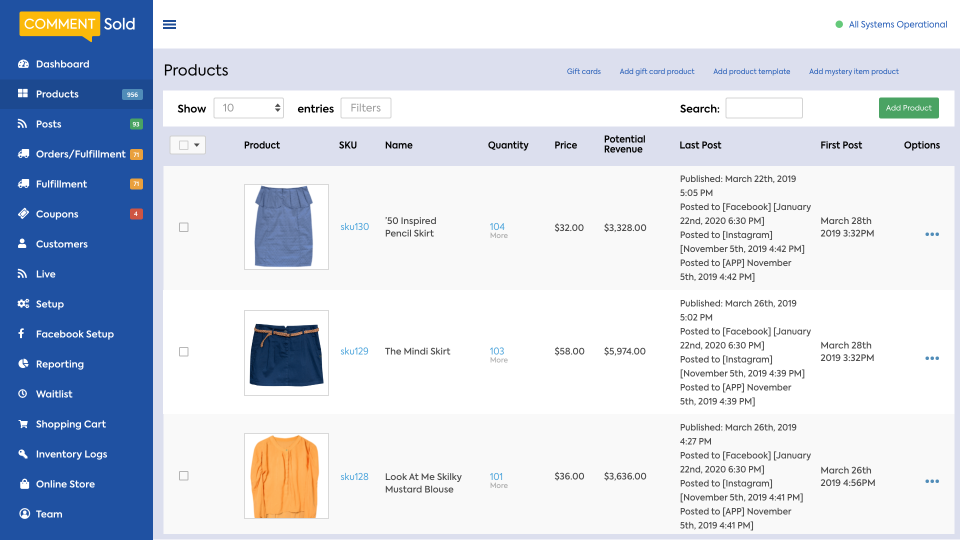- Comments Plus +comments & Reviews 2017
- Comments Plus +comments & Reviews Sweepstakes
- Comments Plus +comments & Reviews Expedia
- Comments Plus +comments & Reviews -
NEW! Comment Plus is now distributed via Code Canyon and supported by a new team.
30+ Sample Report Card Comments (Plus a Printable Version, Too!) Help has arrived for report card time! Effective parent-teacher communication is a cornerstone to effective parent involvement. ‘The album notes will include comments from Steve Goodman on prison injustice, plus internet sites to check out on the unfair prison system.’ ‘See, for example, the comments set out as notes under the entries for Thoosuchus and Yarengia.’.
Please refer to the above page for this plugin documentation.
In this site the original Comment Plus plugin will be available and supported to who has an account with an active contract.
Comment Plus magically extends the WordPress comment system
Practice with comments and other collaboration features in Word by downloading this Collaborate in Word learning guide. You can edit a comment by selecting Edit comment under the More thread actions drop down menu, which can be found in the top right hand corner of the comment. A button to allow the entry of (one) comment is properly named Comment A control to display the list of all comments would be properly labelled Comments (show or display is implied) Since comments are created one at a time, usually singular applies.
- image attachment
- replynotifications via email
- increase the readers retention
- increasethe discussion level
And more: smiles support, image watermark, attached image gallery short code, fully configurable messages with dynamic tags and… works out of the box!
Comment Plus can give new life to your post letting readers to discuss and interacting each others!
Full feature list
- send notifications of new comments to subscribed readers
- send notification of replies to a comment to the original comment author (greatly increase the discussion level)
- send a welcome (to my blog) email on first comment
- send thank you message on first comment on a specific post
- subscription check box on comment form (for all comment and/or for replies)
- subscription to the comment thread of a post on the thank you messages
- notifications with reconstructed thread for who uses the threaded comments
- notification with thumbnails of comments attached images
- image attachment to comments with control on display sizes and layout (png, jpg and gif supported)
- messages with PHP enabled so you can add “logic” inside them
- lot of tags to customize the messages with subscriber and author names, comment excerpt or thread excerpt, post title, post link, comment link for quick access to the blog…
- HTML or plain text messages
- little statistics about emails sent
- flexible and easy to configure
- short code to create a gallery from comment attached images
- watermark for image
Working demo
Comment Plus is installed in this site, so you can see it in action everywhere. Anyway there is a specific demo page when you can try it.
A real page where the plugin is widely used can be found on Periodo Fertile.
Installation and activation
Install it as a regular plugin then activate the feature you want, setting it as “enabled”. By default no features are active to not disturb your blog normal behavior.
Some default values are already configured but there is a lot of changes you may want to make, specially on messages, to reflect your own blog and communication style.
Image attachment
Once enabled and set to inject the new image field automatically, the comment form under every post should show a button to select an image. Comment Plus supports JPEG, PNG and GIF formats.
If the button does not appear, it’s almost surely a problem of your theme that does not call the “comment_form()” function: ask the theme author. More about the comment_form() function call is reported below.
When a user attach an image to a comment he anyway must add some comment text otherwise WordPress won’t accept the comment. Images are store in their original format and showed inside the comment text sized as configured by you. The image placement inside the comment text area can be controlled too: on top or on bottom, left or right.

Comments on WordPress database are not modified by Comment Plus, the plugin only adds the image while the comment is displayed. If you deactivate Comment Plus, comments will be displayed as usual without the attached images and without odd tags!
Notification of new comments from WordPress to the administration email are slightly modified by Comment Plus adding a note about the attached image (if any) with a link to see it.
To manage images Comment Plus needs two folders that it tries to create when needed: “wp-content/uploads/comment-plus” and “wp-content/cache/comment-plus”. If, for any reason, those folder are not there, you can create them by hand, usually with permissions set to 777. To create thumbnails Comment Plus uses the latest secure version of timthumb.
Full size images and bandwidth
Since version 1.2.0.
Since most of the users will upload camera taken photos and nowadays cameras are minimum 5 megapixels, they will send you big file. You can set the image attachment feature to resize automatically the uploaded images to keep them inside specified dimensions and store the original ones in a separate folder.
The folder with original pictures is now protected blocking the access (for Apache and IIS), so even if one has the path to the images he cannot download it. This is important when you use the watermark (see below).
The gallery of uploaded images
Since version 1.2.0.
It’s possible to insert inside a post a gallery (like the ones generated by WordPress) of very attached images. This can be done with a special short code:
[ comment_plus_gallery ] (with no spaces inside the square brackets)
This short code accepts the parameter “max” to specify how many photos you want on the gallery:
Comments Plus +comments & Reviews 2017
[ comment_plus_gallery max=”9″ ]
Comments Plus +comments & Reviews Sweepstakes
Watermark
Since version 1.3.0.
It is possible to add a watermark image to every picture uploaded with a comment. This feature is actually not perfectly integrated and reaquire a little manual work.
The watermark image must be a semi-transparent PNG named “comment-plus-watermark.png” and to be uploaded inside the “wp-content” folder. The image width should be at least wide as the maximum horizontal dimension you set for big version images (see below). For example I set 1024 as maximum dimension for images and so I created a 1024 pixel wide watermark. The heigth can be lower, it depends on the kind of watermark you want to obtain.
The watermark is placed in the middle of the original image, actually there is not option to set the watermark position.
The originally uploaded images are NOT watermarked, so you can change your watermark in the future and “remark” every image: just empty the “wp-content/cache/comment-plus” folder.
Hence, the original uploaded images should not be accessible otherwise malicious people can download the original on: Comment Plus add some files (for Apache and IIS) to block the download.
(I had a problem on a site where users uploaded personal pictures and they was theft and reused on other sites; a strong watermark and a block to the original photos solved the problem).
Understanding original, resized and big image versions
To better understand how Comment Plus manages uploaded images, follow this process:
- a user upload a full quality image, may be taken with his reflex camera at 10 megapixels
- if you set Comment Plus to store images with a maximum size, it will be reduced and stored inside the “uploads/comment-plus” folder as if it was the original and the real uploaded picture is moved inside “uploads/comment-plus-full-size” folder (or the one you specified on configuration). From now on, the full quality picture is ignored by comment plus and it uses only the resized version.
- if you did not set a maximum dimension, no “full quality piucture” management is done an every photos is store inside the “uploads/comment-plus”
- if you set a big version image dimensions (usually lower than the stored maximum size) or if you activate the watermark, the “uploads/comment-plus” folder is make inaccessible and every images is served from cache “wp-contents/cache/comment-plus” (because resized to the “big version size” or because watermarked
Comment notifications
Enabling comment notifications and setting to inject the “notify me” check box automatically, you’ll end having a subscription check box inside the comment form. Remember to give a label to your check box (always on configuration panel).
If the check box does not appear, it’s almost surely a problem of your theme that does not call the “comment_form()” function: ask the theme author. More about the comment_form() function call is reported below.
When a user leave a comment (and actually only when he leave a real comment), if the check box is checked his email and name are stored in a special Comment Plus table that records every subscription. Each subscription is relative to a post: if the reader leave five comments on five different posts and subscribe the notification every time, he will be registered five time in relation with the five posts.
If a reader leave more than a comment on a post and every time he check the subscription option, he will be registered only one time for that post. No, there is no way to show the check box already checked when, for the second time, it leave a comment and he is already subscribe on that post. Why? Because he is a reader not a registered user so Comment Plus knows nothing about him.
The main piece to configure is the notification email subject and body. First, choose if you want to send them in HTML or text format. The first is more complex and let you to graphically format the message, but you need a minimum of HTML. The second is more straight and compatible.
If you want to use the HTML format, check that and reset the message so it will be filled with a full working example. Other examples can be found on “templates” folder, inside the Comment Plus folder… or at least there is an interesting message with thread excerpt example (see picture below).
If you want to make the messages richer adding the latest post or a blog tag cloud, using the HTML format is mandatory. To insert those pieces of text, see the code snippets ready to be used on “tags and codes” configuration subsection.
Tags
Messages can be customized with a number of tags: {name}, {comment_author}, {post_title}, {comment_link} and so on. They are all listed and explained inside the configuration panel on “tags and codes” subsection.
Cancellation
Notification messages should contain the cancellation link, generated by the tag {cancel_link}. Provided examples already contain it. When a user follow that link suddenly the user is cancelled from the database but only relative to notifications of the commented post. A message is shown to the user, as you configured “notification cancellation” option. You can choose to send the user to a dedicated page, but it’s an advanced configuration.
Direct subscription by subscribe link
After we’ll see the welcome and thank you messages. On those messages you can invite the reader to subscribe to comments of the post he commented for the first time offering a subscription link. If they click it, the direct subscription message is shown. Do not forget to configure it if you want to use the subscribe link. See below.
Welcome message
The welcome message is sent to a reader who leave for the first time a comment on your blog. The welcome message can have many purposes and usually it’s a method to invite the reader to return back offering some other content to explore.

A reader is considered a first time commenter IF his email address is not already present on WordPress comment list.
Tags
This message can be customized with some tags referring to reader name and email or the post where he left the comment. They are all listed and explained inside the configuration panel on “tags and codes” subsection. There is a special tag usable on this message, the {subscribe_link} tag: this subscribe the reader to the post where he left the comment, directly.
See the comment notifications paragraph for a message that must be configured for this tag.
Thank you message
The thank you message is sent to a reader who leave for the first time a comment on a specific post. The thank you message can have many purposes and usually it’s a method to invite the reader to return back offering some other content to explore. On this message is particularly interesting to add a subscribe link with the {subscribe_link} tag.
A reader is considered a first time commenter IF of that post his email address is not already present on WordPress comment list of that post.

Tags
This message can be customized with some tags referring to reader name and email or the post where he left the comment. They are all listed and explained inside the configuration panel on “tags and codes” subsection. There is a special tag usable on this message, the {subscribe_link} tag: this subscribe the reader to the post where he left the comment, directly.
See the comment notifications paragraph for a message that must be configured for this tag.
Smilies

Since version 1.3.4
Enabling this feature, a row of smilies is added above the comment text area (if and only if your theme uses the standard WordPress comment form).
A click on a smilie insert in the comment text a special symbol which will be replaved by the relative smilie image when the comment is displayed. Note that the text area where the user writes his comment is pure text, so the smilie cannot be shown while writing!
Extra or substitute smilies can be installed on a special folder:
wp-content/extensions/comment-plus/images/smilies
and the found images will be added to the list (you can even disable the standard smilies and use only your own – the ones added to the above folder).
The textual symbol which represent a smilie is the image name on disk, so keep it meaningful.
If an extended smilie has the same name of a standard one the former will replace the latter. So if you want to change the smilies images after you started only with the supplied smilies, just use the same names and put them on the extensions folder above.
Advanced options
They are called advanced and there is a reason: do not play with them without thinking twice what you are doing.
Logging
Comment Plus can log what is happening. The log is very verbose so it creates a big file even with a low number of subscribers. The file is create inside the folder “wp-content/logs” and a ciphered name: “comment-plus-{long random code}.txt”. This name cannot be guessed so the log cannot be downloaded by malicious people. The log can contain emails or other personal data. If you don’t need it, leave it disabled.
Return path
On some provider setting this parameter can block the Comment Plus emails!
The return path is a regular email address (usually in the same domain of the “from” email if not equals to it) where error emails from external server are sent. If a reader input a wrong email address (but formally correct) an error message is usually sent back. Since servers sending a lot of email to erroneous addresses can be marked as spam, knowing that an address is wrong lets you to delete it from the subscribers.
Notification to administration email or blog user
I’d like to receive notifications from Comment Plus (as administrator of this blog) every time a comment is left on my blog. That because the Comment Plus notification gives me a full view of the thread an make it easy to answer.
Enabling the notifications to the administration email (see WordPress main settings) or for specific blog users’ id a copy of each notification is sent to those addresses. Choosing blog users as recipients of notification copies can be useful when the blog is managed by few people.
On those copies the cancellation link does not work, of course!
Migrations
Comments Plus +comments & Reviews Expedia
Comment Plus can migrate the images collected by Comment Image plugin and subscribers by Comment Notifier plugin. Just press the migration button and, please, READ the result message, it’s important.
If the migration button to import the Comment Notifier subscribers is pressed more than one time NOTHING of bad happens, no duplication will be stored on Comment Plus database.
I have the code to migrate from Comment Subscribe too, just ask!
Tips
How can I put inside notification a Facebbok share link?
Note: the share link is not the like button. Like button cannot be added to emails. The code to add a share link is explained on configuration panel on “tags and codes” section.
How can I add a list of the latest blog post to emails?
On “tags and codes” section of configuration panel there is the code you can use. Just copy it where you want. Email with such code must be in HTML format.
How can I add my blog tag cloud to emails?
On “tags and codes” section of configuration panel there is the code you can use. Just copy it where you want. Email with such code must be in HTML format.
I have a problem!
Readers are claiming they receive too many emails
Have you added the cancellation link on notifications? Be aware that many readers simply DO NOT READ the instructions to cancel them self. Politely tell them about the cancellation link (almost every time they will respond: “OMG, me stupid…”) AND remove them using the deletion feature on configuration panel. Do not try to keep subscribers that do not want to receive emails.
No emails are going out…
- Check your spam folder: the email you are waiting for is there?
- Test email sending with the test feature on main settings of Comment Plus. A test message should come to the specified address. This test sends an email in the same way notifications are sent. If this test email arrived, the notifications should too.
- Create a WordPress user and check the option to send him the assigned password. As user’s email use an address you can check, of course. If this email arrives, probably you must change the Comment Plus sender configuration or the advanced return path address. Try to empty them all.
Image thumnails on comments are not displayed
Check if images are saved inside the “wp-content/uploads/comment-plus” folder. If the folder is missing (really odd), create it by hand with 777 permissions (read, write, list for all).
If the comment images are correctly stored but the thumbnail is not generated, check if the folder “wp-content/cache/comment-plus” is there. If not, create it by hand and reload the page where images were not shown. They should appears and the previous folder filled with files.
Still images do not appear? May be timthumb cannot generate them due to low memory limits. Since timthumb is no more used since version 1.1.0, and WordPress internal image functions are used, may be there is a memory limit problem. Processing big images requires lo of memory and PHP can be configure with a low memory limit. It can be of help to check the server log for an exhausted memory message (you need a technician).
Images are not displayed with the right layout
Your theme is probably forcing a different style than the one set on Comment Plus configuration panel. You probably need a CSS expert to evaluate what’s happening.
Some emails are sent, some others not
- The “not sent” email can be on spam folder, ask the reader to check that folder too and to add your address as a trusted address (it may be enough to add the address to their address book).
- You provider can block mails directed to some specific domain or some domains can refuse emails from you: it’s not a thing the Comment Plus can solve. Try the mailing test feature (see above) on those non receiving addresses.
- Your provider is hapy to send 100 emails per day, but it can decide to drop some correspondence if you send too much notification (GoDaddy users, you are warned). Ask them about their limits.
- Some provider require the usage of an SMTP to send email. Comment Plus does not provide SMTP integration, but there are lot of plugin (free and commercial) to do that.
I want to see what is going out!
Yes, me too, and this is why on advanced configuration you can enable Comment Plus to send a copy of each email to the administration email (configurable on WordPress main settings) or to specific WordPress users (whent he blog has more than one administrator). I use the feature to quickly reply to comments.
Pay attention, there is a BCC configuration too, but it is only for test: if you set it every email sent will have that address as BCC. If comment plus for a notification sends 1000 emails, the BCC address will receive them all too!
Without question, getting comments from interested readers is one of the most enjoyable and rewarding aspects of blogging. Unfortunately, interacting with people through comments is an asynchronous task, and this oftentimes makes it difficult to follow the ongoing conversation.
Over the past couple of years, I’ve seen designers and programmers attempt to solve this problem with things like threaded comments or even in-line ajax commenting. Problem is, solutions like these tend to fall into one of two categories:
- They are ugly as sin and a nightmare to style.
- They are technical, complicated, and require you to install a plugin to get the result you want.
Man, oh man… If there’s one thing I hate more than ugly, it’s complicated.
Clearly, we need a comment management solution that is not only stylish, but also simple enough that anyone can execute it.
Don’t be rude… Address your commenters directly!
When you’re out in public and somebody asks you a question, do you:
Comments Plus +comments & Reviews -
- Address everyone in the surrounding area with your response, or…
- Answer them directly
Silly question, right? Well, dialogue on the Web is no different, yet you often see Webmasters responding to comments without addressing the person who initially asked the question. And even in those cases where Webmasters do include the name of the addressee, the resulting styling usually leaves something to be desired.

Fortunately, WordPress (and just about every other CMS on the planet) contains comment ID numbers1, which allow you to link directly to any comment you like. When you respond to people’s questions, you should use this ID to link the commenter’s name to their original question.
From a usability standpoint, this is excellent because it leads readers down a direct path that will help them follow the conversation. Plus, it eliminates the incredibly annoying need to scroll through a long list of comments while looking for the original question.
Check out how this works by looking at a live example of an interactively-linked comment (edit: link removed).
A little style makes everything better
Alright, now that you know how to address your readers, you need to add a bit of style to those comment links. However, due to the nature of comments on blogs, there are a couple of design constraints that we’ll need to work with in order to get the most effective, least confusing result.
- The links to commenters should not clash with regular links that people sometimes post in comments; therefore, they must be styled differently (and possibly behave differently) than normal comment links.
- The name of the commenter to whom you’re linking should stand out visibly, but the styling should not dominate other important elements (like the name of the person leaving the response, for instance).
On my sample comment (edit: link removed), notice how I’ve styled the names of the people I’m addressing in bold. Also, notice how I’ve italicized their names to help differentiate them from my name, which appears at the top of the comment.
Finally, if you mouse over one of the links, you’ll see that it behaves differently than regular links on this site. Again, the entire goal of these commenter links is to foster the conversation and improve usability, so that’s why I’ve taken a minimalist, simplistic approach to styling them.
Enough theory, already—let’s get stylin’. Here’s the CSS I’m using, but keep in mind that your mileage may vary due to the way your anchor tags (<a>) are styled by default.
Once you’ve got those definitions in your stylesheet, all you have to do is put them to use in your comments. A sample of what you would actually write in your comment box to get the desired result might look something like this:
Keep in mind that with some WordPress themes, the comment_link class may already be in use. If you find that’s the case, simply change it to something like commenter_link… You get the idea ;)
The Bottom Line
You can’t just do one or two things well and have a truly remarkable Web site. If you want to stand apart from the crowd, you need to leverage small details—like better comments, for instance—to place your site in a position to succeed.
Remember, your success on the Web depends on how effectively you can communicate with your audience, and anything you can do to improve that interaction is going to pay dividends down the road.
1 Well-constructed WordPress themes contain permalinks to each comment. If your theme doesn’t, please consider upgrading to something more robust. I’m partial to these WordPress themes, but that may just be me… ↩
